By Simon Garratt
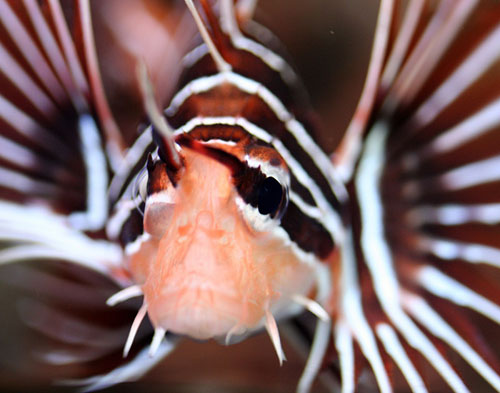 There are some fish that simply epitomise the coral reef and even a non-hobbyist can easily run off at least two common names (or cartoon names) when asked to name two fish from the reef environment.
There are some fish that simply epitomise the coral reef and even a non-hobbyist can easily run off at least two common names (or cartoon names) when asked to name two fish from the reef environment.
Pixar’s creations aside, The Lionfish will usually be within the top ranks. Commonly called Turkeyfish, Firefish, Scorpionfish, Dragonfish, Stingfish and a whole host of other names, the Lionfish as we more commonly term it has quite rightly won a place in our hearts as one of our longest standing, visually dramatic, and most durable aquatic residents.
‘Lionfish’ is a very generic term though, as it relates to a whole host of species all belonging to the order Scorpaeniformes and the family Scorpaenidae. It is a large group of predatory fish making up more than 18 genera and several hundred species which as their names suggests, carry poisonous spines usually along the front half of the dorsal, anal, and pelvic fins, that are capable of inflicting a painful wound that can range from minor irritation to excruciating pain or even death in some cases. This article isn’t about Scorpion fish as a whole though, so I will leave the biology there, and focus on the main subject at hand which is Lionfish in captivity, especially in relation to reef aquaria, and getting them to behave as much as feasibly possible in the presence of other fish. I will add in the usual disclaimer at this point though— regardless of what I say or advise on keeping lionfish, further research on the part of the keeper into the exact species being kept is always strongly advised–especially seeking information on that particular species venomous capacity.
The main members of this large family we commonly encounter are the larger members of the Pterois, and the smaller members of the Dendrochirus families. Although other genera do make it through to the trade, these two are by far the most common, represented by approximately 20 or so agreed or ‘in debate’ species.
The first common myth to dispel when looking at Lionfish husbandry is to understand that not all are piscivores by nature, and this will by and large give us a big hint in regards to compatibility. In fact, most are predominantly crustacean feeders as juveniles, only moving onto fish at a later stage in life as adults. Even then, out of the 20 or so species we commonly see, only the largest members Pterois volitans and Pterois antennata become piscivores on a major scale as adults. Pterois radiata, and the smaller Dendrochirus family retain their crustacean hunting habits throughout their lives, only taking the occasional opportunistic fishy meal.
The other common myth which in fairness is derived from factual occurrence is the common claim that lions will ‘happily’ consume fish half their own size. Whilst this may be true in the odd case where a fish has been starved, it is by and large not a natural nor healthy pastime for lionfish. The reasons for this are quite simple, in that lionfish all have a telescopic jaw assembly. This adaptation allows the fish to hunt effectively and with minimal risk to itself, simply by targeting its prey and extending its considerable mouth cavity at an astonishingly rapid velocity, thereby creating a vacuum into which the hapless victim is sucked. This mouth assembly which consists of various interlinking sections joined by a fine web of tissue is easily damaged by a struggling prey item if it wont fit neatly into the space available, so its not actually in the interests of the fish to put itself in a position where its only means of gaining food can be damaged. So make no bones about it, lionfish do actually prefer food items that will fit ‘easily’ into their mouths, and would much rather take on several smaller prey items over a hunting period, than a single large and potentially dangerous adversary which in struggling, may damage the delicate mouth joint assembly, leaving the fish unable to feed.
I’ve had the opportunity on lots of occasions to watch Lionfish of various species in the wild, both in dormant daytime mode, Night dusk and dawn hunting mode, and on rare occasions full daylight hunting mode in the case of some larger P.volitans individuals, or groups. Yes I did say groups, as its been commonly observed by many authorities that some P.volitans ‘packs’ will actively work together to herd schools of small bait fish (measuring between 1 to 3 inches in size) into areas where they can be picked off one at a time, or they will drift in amongst schools of small fish motionless like clumps of weed waiting for any prey item to pass in front of that cavernous mouth. The herding tactic is common throughout the entire family for catching fish and crustaceans, whereby the large pectoral fins with cryptic markings, are spread wide to push a prey item backwards into a corner or to limit the escape route. Once cornered, the prey is pounced upon with a lightening strike that is difficult to track, even with a high quality camera and high shutter speed. Some of the smaller species will commonly ‘walk’ across the substrate using the bottom rays of the pectoral fins, gradually creeping up on an unsuspecting victim. This striking action can clearly be seen in this video:
https://www.youtube.com/watch?feature=player_embedded&v=ZJdMRu1F29A
In captivity we can use these traits to our advantage, commonly enabling us to keep certain species in mixed reef aquaria even in the presence of smaller fish that we wouldn’t normally have considered safe if we were to believe all the hype. The key to success here is in feeding and conditioning.
Nearly all Lionfish will need weaning onto dead food as early as possible if you want to house them long term with fish that are of a much smaller size. Even then, common sense should prevail. Placing an eight inch plus lionfish into a reef tank that has a school of 1” red dot cardinal fish sitting there under a coral head is probably pushing things a little too far beyond temptation. But there should be no reason why a well ‘and more importantly’ regularly fed lion from the smaller Dendrochirus family which includes the stunning but difficult to acclimatise Fu-Man-Chu or Dendrochirus biocellatus lionfish can’t be housed with fish such as Anthias, or Chromis. Remember that members of this family are by and large crustacean feeders by nature, not piscivores. We may even tentatively add the smallest member of the Pterois family into this group as well if we fancy a species that is known to be more of a challenge, that being P. radiata.
The key is in understanding the fishes digestive system and hunting drive. A fishes feeding urge is driven directly by the amount of food passing through its digestive system at any one time, with lots of smaller feeds providing a more constant level of moderate feeding drive compared to a large intermittent single meal that passes through the digestive system in one go, leaving the fish empty for long periods in between and extremely hungry. In the case of lionfish, this can mean the difference between a fish that is willing to wait till its feeding time, and one that gets too hungry, to the point its hunting instinct takes over eliciting anti-social behaviour and predation on much larger morsels than it would normally tackle i.e. its tank mates.
The best long term results come from acquiring juvenile fish less than 2” in size. Predominantly these fish adapt far more readily to dead foods than their larger counterparts. This is largely due to the fact that small Lionfish typically snuffle around rockwork, feeding on smaller, slower moving shrimps and crabs rather than chasing fast moving prey items out in the open water. For the hobbyist this is a bonus because it means we can in many cases take advantage of this trait by settling and conditioning the fish before it has developed a taste for larger prey and become conditioned to actively hunting live foods.
Having a smaller tank coupled to the main system is a big bonus here, as we can focus food at the fish without the competitiveness of other tank mates until such time as we have set in motion a pattern of feeding that suites both our and the fishes needs. Despite their fearsome name, Lionfish aren’t actually aggressive towards other fish, and will commonly loose out in a feeding rush. In my case, I condition the fish over several months in a remote tank to recognise two triggers– the end of the full lit period when the main lights go off, just leaving supplemental lighting on— and a reduction in circulation as the main pumps are turned off. This allows localised feeding where the fish gradually learns to associate both the change in tank conditions and activity above the tank as a feeding cue. After a while, the fish will automatically travel to the same location to await feeding at the same time each day, or at times when the conditioned triggers are set in motion. Lionfish are instinctively lazy fish by heart and won’t turn down an easy meal once accustomed to a routine, and it’s that habit that ensures long term success. So contrary to popular methodology, I have always fed my Lions ‘daily’ on a diet of several small prey items, rather than a feed every few days on fewer but much larger items. The overall amount of food is still the same, but the fish is now able to digest its food better, more consistently, and the hunting urge is suppressed to more acceptable levels.

Frozen foods are often rejected at first, but weening your new fish off of live foods is critical to long term success in captivity.
On initial introduction, many Lionfish will refuse to accept dead foods, but are usually coax-able by way of some moderate starvation. Should the fish not accept dead food within the first week, then a small feed of gut loaded live shrimp may be needed to boost the fish along, but dead feeding should be resumed as quickly as possible shortly afterwards with the same pattern repeated until the fish gives in to temptation. Motion is a strike trigger in most cases, so any food added should ideally me moving around by way of a small amount of circulation, via a bait line dangled temptingly under its nose, or on the end of a set of feeding tongs. A shrimp bouncing slowly across the bottom or falling through the water column is a far better trigger than one just sitting there doing nothing, but don’t be surprised if after getting a taste for prepared foods, the lionfish actively grows to recognise and take food whether its falling through the water column, or settled on the bottom (they really can be Hoovers on occasions). The key here is perseverance and consistency. Feed in the same manner and under the same conditions each day to build a pattern that the lionfish comes to recognise and can be followed once transferred to the main system. From that point onwards, it is merely a question of always remembering you have a predator in your system that will turn, ‘if’ you don’t keep it happy and regularly fed. You really cannot blame the lionfish for hunting its tank mates if it has been left with an empty stomach for the last 24 hours.
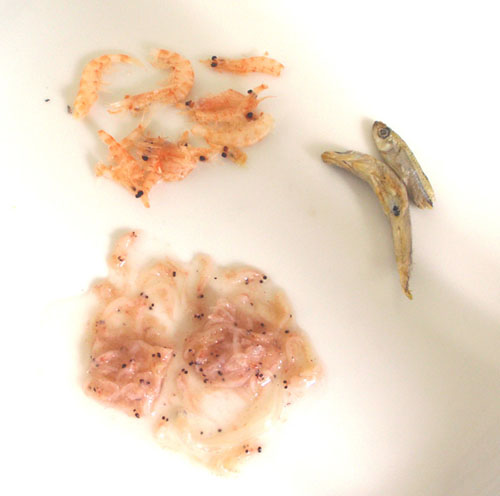 Good starter foods are typically medium sized Pacifica Krill and small pieces of white bait or lance fish, progressing to whole krill and occasional lance fish as the fish matures. By and large though, crustaceans should form the bulk of the diet as they do in the wild, with all but the largest specimens preferring a regular fish based diet. Another good reason for feeding several smaller morsels in one sitting over a single large chunk of food is that the fish is able to obtain more nutrition from the steadier stream of food passing through. It is not uncommon for grossly overfed lionfish to excrete large packets of only part digested food, which then go on to cause water quality issues. Obviously it goes without question that housing Lionfish with shrimps of just about any sort is usually a bad idea, with the boxing shrimp Stenopus hispidus or its similar sized and well armored relatives being the possible exception to the rule when housed with smaller lionfish.
Good starter foods are typically medium sized Pacifica Krill and small pieces of white bait or lance fish, progressing to whole krill and occasional lance fish as the fish matures. By and large though, crustaceans should form the bulk of the diet as they do in the wild, with all but the largest specimens preferring a regular fish based diet. Another good reason for feeding several smaller morsels in one sitting over a single large chunk of food is that the fish is able to obtain more nutrition from the steadier stream of food passing through. It is not uncommon for grossly overfed lionfish to excrete large packets of only part digested food, which then go on to cause water quality issues. Obviously it goes without question that housing Lionfish with shrimps of just about any sort is usually a bad idea, with the boxing shrimp Stenopus hispidus or its similar sized and well armored relatives being the possible exception to the rule when housed with smaller lionfish.
Over time, with an instilled feeding regime your lionfish should reward you with many years companionship whilst not being at the expense of your other stock. It is also quite likely that if the lionfish and rest of the stock have grown up together, then the predator vs prey relationship will be distilled even further, much the same as the kitten that grows up with a rabbit or pet hamster.
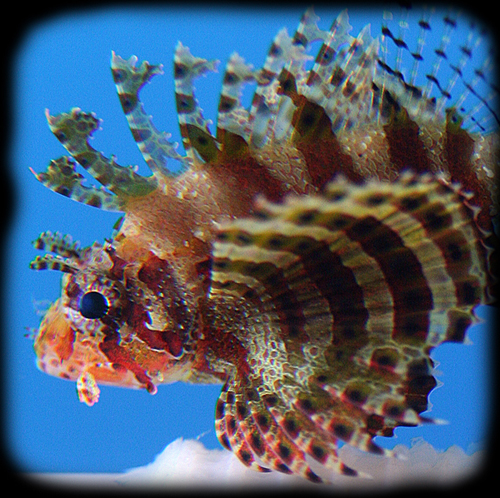 So hopefully, this article has belayed some of the fears and corrected some of the myths of keeping lionfish in reef aquaria. It ‘is’ possible, if you understand the nature of the beast as it were, and accept that lionfish in general are not the mindless gluttons we commonly make them out to be. As so commonly happens within our hobby, we mistake our own past lack of understanding as a trend that paves the way for future advise, instead of going back to the beginning and looking at things afresh with more up to date knowledge.
So hopefully, this article has belayed some of the fears and corrected some of the myths of keeping lionfish in reef aquaria. It ‘is’ possible, if you understand the nature of the beast as it were, and accept that lionfish in general are not the mindless gluttons we commonly make them out to be. As so commonly happens within our hobby, we mistake our own past lack of understanding as a trend that paves the way for future advise, instead of going back to the beginning and looking at things afresh with more up to date knowledge.


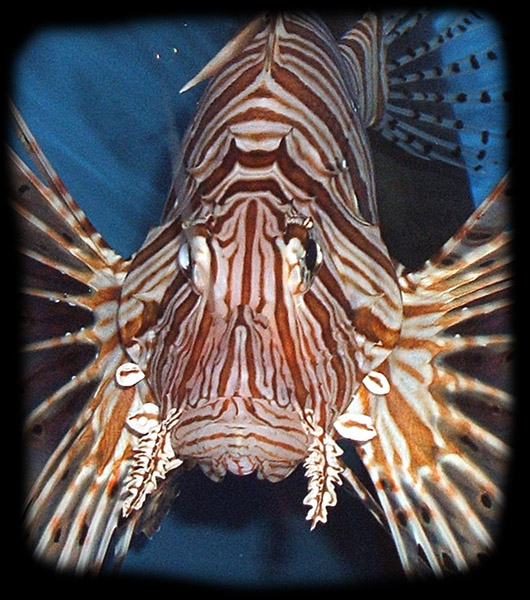
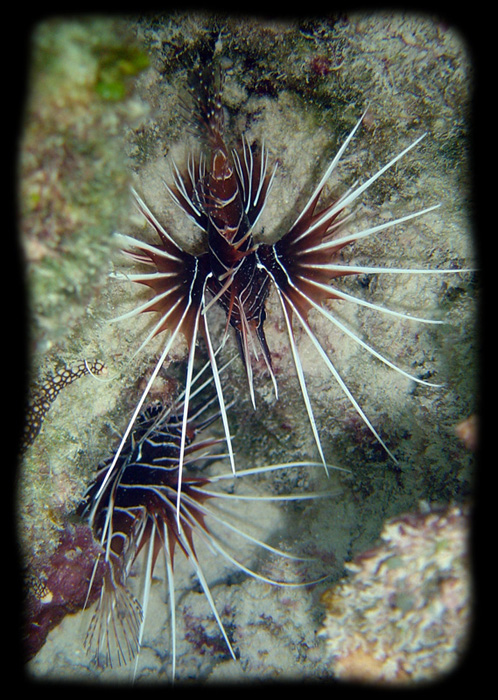


Very refreshing read. I completely agree that lion fish are compatible with many more tank mates than one might think.